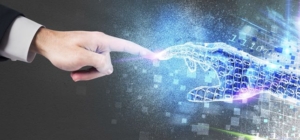The Convergence of Physical and Digital: Exploring the Impact of Crypto Assets
I continue looking at the ever-evolving world of technology, the lines between the physical and digital realms are becoming increasingly blurred. As a crypto expert with over eight years of experience, I’ve witnessed firsthand the transformative power of crypto assets in bridging these two worlds. This article aims to shed light on this fascinating convergence and its implications for our understanding of value, ownership, and the future of commerce.
Why “Phygital” Resonates with Me
- Beyond Digital Assets: While cryptocurrencies represent a purely digital value, the concept of “phygital” allows us to anchor that value in the physical world. Think of crypto collectibles or NFTs that have real-world counterparts.
- Enhanced User Experiences: As an industry expert, I’ve always advocated for user-centric approaches. The phygital realm offers unparalleled opportunities to enhance user experiences, making interactions more intuitive and engaging.
- Bridging Divides: The crypto world can sometimes feel intangible and distant to many. By integrating physical elements, we can make it more accessible and relatable to a broader audience.

Understanding Crypto Assets and Their Role in the Convergence
Crypto assets, often synonymous with cryptocurrencies, are digital representations of value secured by cryptography. But beyond mere digital currencies, they have the potential to represent physical assets through a process called tokenization. Imagine owning a piece of art, not in its physical form, but as a digital token on a blockchain network. This not only democratizes asset ownership but also introduces a myriad of benefits like enhanced liquidity and accessibility. However, with these advantages come challenges, especially concerning the authenticity and security of these digital representations.
Exploring Real-World Examples of Physical and Digital Convergence
The real estate sector offers a compelling glimpse into this convergence. Virtual real estate NFTs (Non-Fungible Tokens) are being traded in virtual worlds, blurring the lines between physical property rights and digital ownership. Another example is luxury goods, where blockchain technology is used to verify the authenticity of products, merging the user experience of the physical world with the security and transparency of the digital.
Implications for Industries and the Economy
The ripple effects of this convergence are vast. In the real estate sector, tokenization could revolutionize property ownership, making it more accessible and liquid. The financial market, already disrupted by cryptocurrencies, will see further innovations as physical assets like gold or commodities get tokenized. Retailers, too, can leverage this technology to offer unique digital experiences, merging in-store interactions with augmented reality or virtual overlays.
Challenges and Risks in the Convergence
While the potential is immense, so are the challenges. Regulatory frameworks are struggling to keep up, leading to potential legal gray areas. Security concerns, especially in the realm of crypto custody, are paramount. Ensuring the authenticity of tokenized physical assets and protecting them from cyber threats will be crucial.
Future Outlook and Opportunities
As technology providers and financial institutions delve deeper into the possibilities of this convergence, we can expect a more seamless integration of our physical and digital lives. The metaverse, a collective virtual shared space, is one such frontier where the physical and digital worlds might become indistinguishable. For businesses, this presents a goldmine of opportunities, from virtual storefronts to new forms of digital advertising.
The convergence of the physical and digital realms, driven in part by crypto assets, is not just a fleeting trend. It’s a testament to the transformative power of technology and its potential to reshape our understanding of value, ownership, and experience. As we stand at this crossroads, one thing is clear: the future is a blend of the tangible and the virtual, and the possibilities are endless.
Lock and load ,
Tony
FAQs (Frequently Asked Questions)
Q: What are crypto assets?
A: Crypto assets are digital representations of value, secured by cryptography. They can range from cryptocurrencies like Bitcoin to tokenized versions of physical assets.
Q: How do physical assets become digital through tokenization?
A: Tokenization involves representing a physical asset as a digital token on a blockchain. This digital token carries the value and ownership rights of the physical asset.
Q: What industries are most affected by the convergence of physical and digital assets?
A: Real estate, finance, retail, and luxury goods are among the industries at the forefront of this convergence.
Q: What are the potential risks associated with this convergence?
A: Regulatory uncertainties, security concerns, and issues of authenticity are some of the primary risks.
Q: How can businesses leverage the convergence of physical and digital assets to their advantage?
A: Businesses can offer unique digital experiences, tap into new markets, and enhance the liquidity and accessibility of assets.


Leave a Reply
Want to join the discussion?Feel free to contribute!